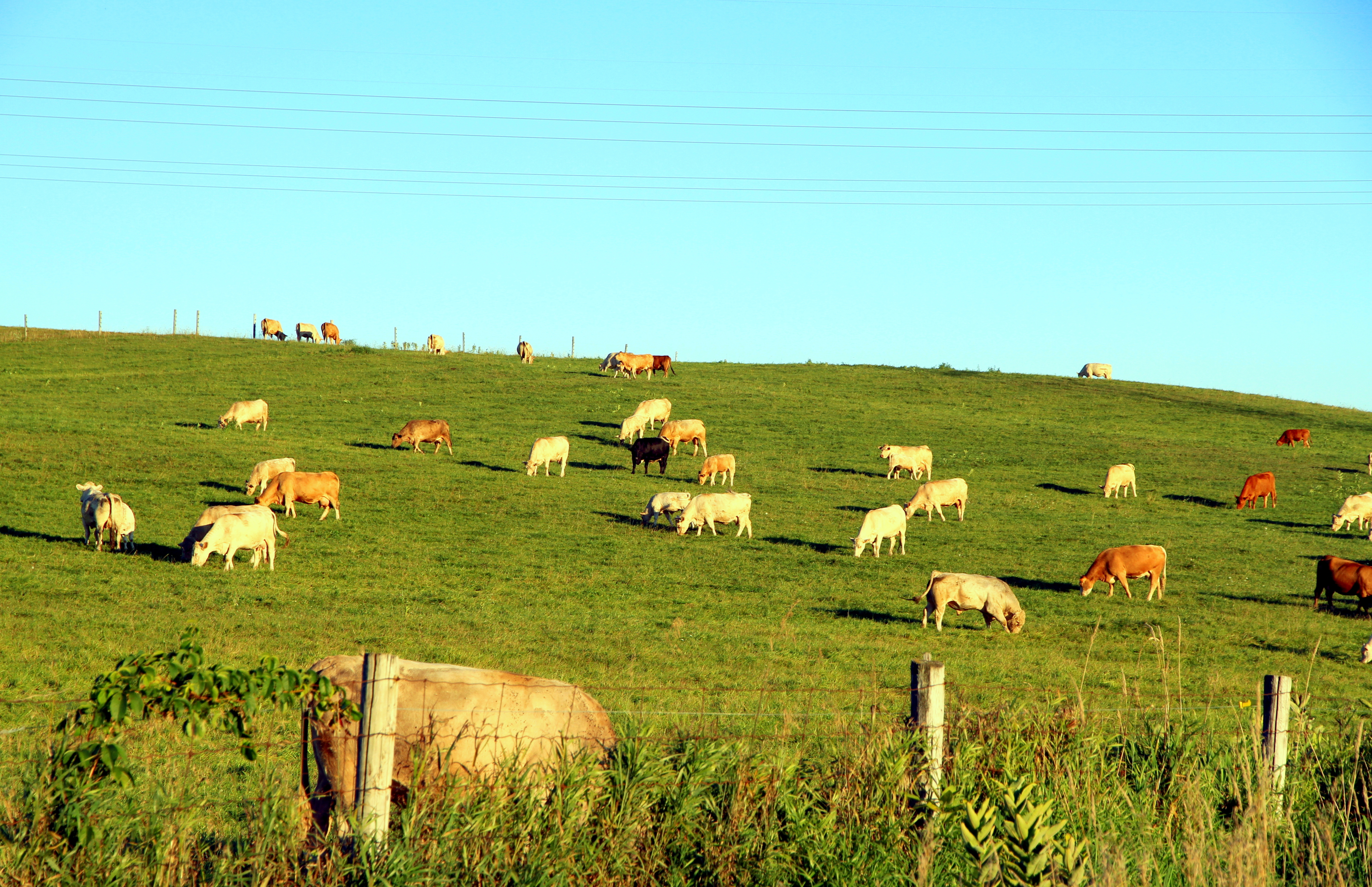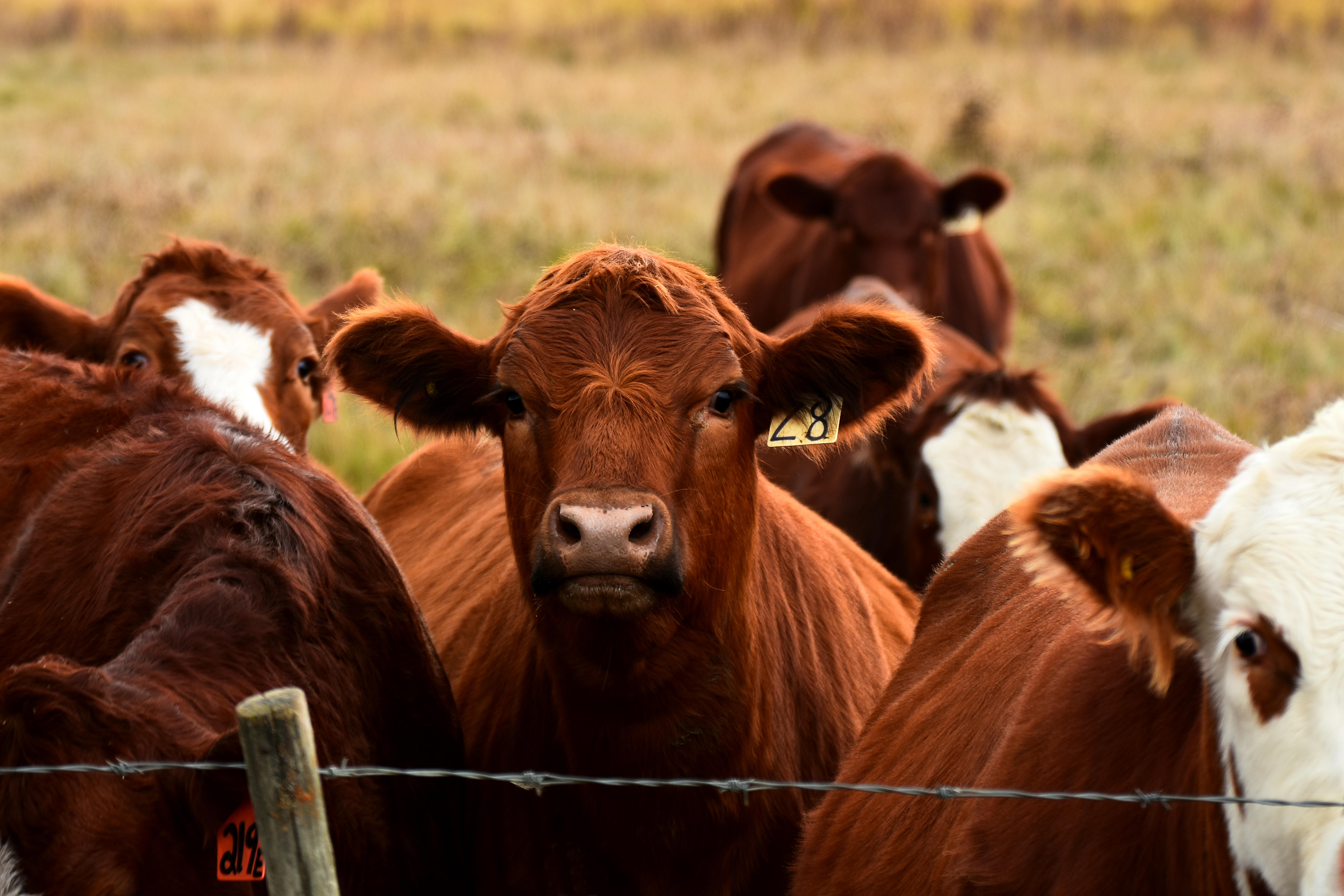Section 1 | Preconditioning Beef Calves
Page 04 /
Vaccination Strategies and Herd Immunity
Vaccination Strategies: It’s about the whole herd
What are Vaccines?
Vaccination is one of the best ways to bolster the immunity of the herd against specific viruses and bacteria that cause disease. Vaccines are products that contain inactivated or killed versions of disease-causing bacteria, viruses, parasites, or toxins (let’s call them “pathogens”). When these products are given to animals, it stimulates the immune system into action against the specific pathogen(s) in the vaccine. They show the body what a disease-causing pathogen looks like without actually causing disease.
The great thing about the immune system is that it can “remember” seeing these pathogens. The next time the pathogen is seen (e.g. when an animal is re-vaccinated or if they become infected with the actual pathogen), a stronger and more rapid immune response is triggered, and the offending pathogen is removed before it can establish itself and cause disease.
For more information on vaccination, visit our page: Vaccination as a Key Animal Health Tool, within the Antimicrobial Stewardship FAAST Review.
As the above figure shows, the first time an animal is exposed to a pathogen, it can take a while for its immune system to respond and clear the disease. After this, the immune system will remember the pathogen. If the animal becomes infected again, the immune system reacts with more speed and strength. If all goes well, the pathogen is cleared much more quickly as well. Vaccines harness this principle — we want animals to be exposed to all of the important pathogens as vaccines. This way, if they ever encounter the REAL pathogen, their immune systems are able to quickly respond and eliminate the threat.
)
Vaccination versus Immunization: What’s the difference?
Vaccination is the physical act of administering a vaccine to an animal. Immunization is the process by which an animal becomes immune to a disease. The two terms are often used interchangeably, but there is a very important difference. The act of vaccination does not guarantee adequate immunization. There are many factors that could affect the ability of a vaccine to adequately immunize an animal.
Animal factors:
Age
- Very young or very old animals might not be able to mount an effective immune response to the vaccine
Colostral immunity
- Colostral immunity (immunity transferred to an infant through its mother’s colostrum) might inhibit an animal’s ability to respond to a vaccine
Sickness and stress
- Sickness and stress can exert immunosuppressive effects, reducing the effective immune response to a vaccine
Individual variation
- Some animals might not have good immune responses to vaccines
Vaccine factors:
Handling
- All vaccines have specific requirements for storage and handling. Any deviation from instructions can greatly affect the ability of the vaccines to stimulate an immune response
- Common examples of improper storage and handling include:
- Extreme temperatures (freezing or too hot)
- Mixing vaccines too early before administration
- Excessive contamination of bottles
Inappropriate vaccines/pathogens
The strains or specific pathogens present in the vaccine are not appropriate for your farm
Make sure that you are following the label instructions when storing, handling, and administering vaccines to the cattle in your herd, in consultation with your veterinarian. In doing so, you ensure that you will be truly immunizing, not just vaccinating, your herd.

Herd Immunity: Health is more than the individual animal
To understand how disease moves through the animals in your herd, there are a few important points to keep in mind:
- There must be an animal that is infected and shedding a pathogen, or a vector (e.g. insect, rodent, feed) or fomite (vehicle, equipment) that is carrying the pathogen
- This infected animal, vector, or fomite must be in contact with a susceptible (non-immune) animal for a long enough time to transmit the pathogen
- This can vary by the pathogen involved
- There must be a high number of susceptible animals in the herd to allow the disease to spread

You may have heard of the concept of “herd immunity”, but what exactly does it mean?
Herd Immunity provides protection to unvaccinated or non-immune animals in the herd by preventing the movement of a pathogen through the herd. For this to happen, you need to make sure that there is a high number of immunized animals within the herd3.
For a look at how, when these conditions are met, a disease such as bovine viral diarrhea (an important cause of abortion, immune suppression, and severe clinical diarrhea in cattle), could move through your herd, check out the following link:
Animated Graphic of Herd Immunity in Action
Relying on herd immunity means that we’re reducing the number of non-immune animals in the herd. There will always be some animals that do not have high immunity in your herd.
Reasons for this include:
- Some animals do not respond adequately to vaccination
- Young animals that have yet to be vaccinated
- The odd animal that slips through the cracks and remains unvaccinated
By making sure the majority of your herd is well immunized, you’re preventing infectious disease spread to these susceptible animals.
With herd immunity, disease is less likely to establish in your herd, fewer antimicrobials will be needed, and your animals will be healthier.
Have a look at the videos below for some great visual explanations of herd immunity:
Scientific American: What is Herd Immunity?
References
- Wilson BK, Richards CJ, Step DL, Krehbiel CR. Beef species symposium: Best management practices for newly weaned calves for improved health and well-being. J. Anim. Sci. 2017;95(5):2170–82.
- O’Connor AM, Yuan C, Cullen JN, Coetzee JF, da Silva N, Wang C. A mixed treatment meta-analysis of antibiotic treatment options for bovine respiratory disease – An update. Prev. Vet. Med. [Internet]. 2016;132:130–9. Available from: http://dx.doi.org/10.1016/j.prevetmed.2016.07.003
- Dohoo IR, Martin W, Stryhn H. Veterinary Epidemiologic Research. 2nd ed. Charlottetown, PEI: VER Inc.; 2009.
